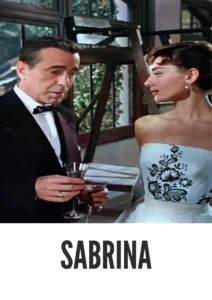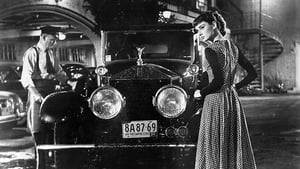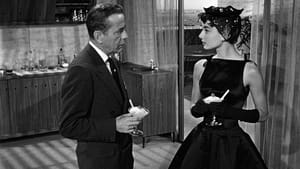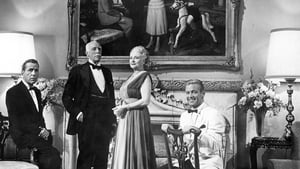Contact: info@alwanfilm.com
Video Sources 0 Views
- Watch trailer
- Sabrina


Synopsis
Table of Contents
ToggleSabrina 1954 Colorized: A Timeless Romance – Film Review

Introduction
In the annals of classic cinema, certain films stand out for their enduring charm and timeless appeal. One such gem is “Sabrina,” released in 1954 and directed by the legendary Billy Wilder. With its captivating storyline, stellar performances, and exquisite direction, “Sabrina” has etched itself into the hearts of audiences for generations. This article explores the essence of “Sabrina,” delving into its plot, characters, reception, and legacy, while also considering the impact of its early colored version on the viewing experience.
Check The Full Colorized Movies List
Check Our Colorized Movies Trailer Channel
Understanding Sabrina 1954 Colorized: Director, Cast, and Genre
Directed by Billy Wilder, “Sabrina” boasts a stellar cast featuring Audrey Hepburn, Humphrey Bogart, and William Holden. Hepburn shines as the titular character, a young woman caught in a love triangle between two vastly different men. Bogart and Holden deliver powerful performances as the wealthy brothers Linus and David Larrabee, respectively. Their chemistry on screen adds depth and complexity to the film’s narrative. “Sabrina” falls into the romantic comedy genre, blending elements of wit, charm, and poignancy to create a cinematic masterpiece.
Exploring the World of Sabrina 1954 Colorized: Plot and Characters
The plot of “Sabrina” revolves around the transformative journey of its protagonist, Sabrina Fairchild. As the daughter of the Larrabee family’s chauffeur, Sabrina harbors romantic feelings for David, the younger Larrabee brother. However, her life takes an unexpected turn when she travels to Paris and undergoes a profound metamorphosis. Upon her return, Sabrina captures the attention of Linus, the pragmatic and reserved older brother. Thus ensues a captivating love triangle, with Sabrina torn between her affection for David and her burgeoning feelings for Linus. Against the backdrop of luxurious estates and high society events, the characters navigate themes of love, class, and personal transformation.
The Art of Film Colorization
Colorization is a process that involves adding color to black and white films, thereby enhancing their visual appeal and modernizing them for contemporary audiences. While purists may argue that colorization detracts from the original aesthetic of classic films, others view it as a means of preserving and revitalizing cinematic treasures for future generations. “Sabrina” 1954, like many other classics, underwent colorization to breathe new life into its timeless story.
Early Colored Films: A Brief History
The emergence of colorized films marked a significant milestone in the history of cinema. In the early days of filmmaking, black and white was the norm due to technological limitations. However, advancements in colorization techniques paved the way for a new era of visual storytelling. Films like “Sabrina” 1954 benefited from colorization, allowing audiences to experience their beauty in vibrant hues.
“Sabrina” 1954 and Its Early Colored Version
The decision to release “Sabrina” 1954 in a colorized format speaks to its enduring popularity and cultural significance. While the original black and white version remains a beloved classic, the colored adaptation offers a fresh perspective on the film’s timeless romance. Through colorization, audiences can immerse themselves in the opulence and grandeur of the Larrabee estate, enhancing their viewing experience and deepening their appreciation for the film’s visual aesthetics.
The Debate Over Film Colorization
The debate over film colorization continues to divide cinephiles and industry professionals. While some argue that colorization compromises the artistic integrity of classic films, others view it as a necessary evolution of the medium. Ultimately, the decision to colorize a film is subjective and depends on individual preferences and interpretations of cinematic artistry.
Examining “Sabrina” 1954 as an Early Colored Film
Colorization adds a new layer of depth and richness to “Sabrina” 1954, enhancing its romantic allure and timeless charm. The lush green landscapes, elegant costumes, and intricate set designs come to life in vivid detail, transporting audiences to the enchanting world of the Larrabee family. While purists may prefer the original black and white version, the colored adaptation offers a fresh perspective on the film’s visual aesthetics and narrative themes.
Influence and Legacy: Sabrina 1954 Colorized’s Impact on Cinema
“Sabrina” 1954 has left an indelible mark on the world of cinema, inspiring countless romantic comedies and influencing the work of filmmakers for generations. Its timeless story, memorable characters, and exquisite direction have solidified its status as a cinematic masterpiece. The film’s enduring popularity speaks to its universal themes of love, transformation, and the pursuit of happiness.
Director’s Cinematic Legacy: Beyond Sabrina 1954 Colorized
Director Billy Wilder’s legacy extends far beyond “Sabrina” 1954, with a prolific career spanning decades and numerous acclaimed films. His unique storytelling style, sharp wit, and masterful direction have earned him a place among the greatest filmmakers of all time. Wilder’s influence continues to be felt in contemporary cinema, with filmmakers drawing inspiration from his work and cinematic vision.
Themes Explored in Sabrina 1954 Colorized
“Sabrina” 1954 delves into themes of love, identity, and self-discovery, resonating with audiences on a deeply emotional level. The film explores the transformative power of love and the importance of staying true to oneself in the face of societal expectations. Through the experiences of its characters, “Sabrina” invites viewers to reflect on the nature of love, the pursuit of happiness, and the complexities of human relationships.
Reception and Controversy Surrounding Sabrina 1954 Colorized
Upon its release, “Sabrina” 1954 received widespread critical acclaim, with praise for its captivating storyline, stellar performances, and exquisite direction. Audrey Hepburn’s portrayal of Sabrina garnered particular acclaim, earning her an Academy Award nomination for Best Actress. However, the film was not without controversy, with some critics questioning its portrayal of class dynamics and romantic relationships. Despite this, “Sabrina” 1954 remains a beloved classic, cherished by audiences for its timeless romance and enchanting storytelling.
Where to Watch Sabrina 1954 Colorized Online
For those eager to experience the magic of “Sabrina” 1954, the film is readily available on popular streaming platforms such as Netflix, Amazon Prime Video, and Hulu. Whether watching in its original black and white format or the early colored version, viewers can immerse themselves in the captivating world of this timeless romantic comedy.
FAQs About Sabrina 1954 Colorized
- Was “Sabrina” 1954 nominated for any awards?
- Yes, “Sabrina” 1954 received several award nominations, including an Academy Award nomination for Best Actress for Audrey Hepburn. Additionally, it received nominations for Best Director, Best Screenplay, and Best Art Direction-Set Decoration.
- What is the significance of the film’s title, “Sabrina”?
- The title “Sabrina” refers to the film’s protagonist, Sabrina Fairchild. Sabrina’s character undergoes a journey of self-discovery and transformation throughout the film, making the title an apt representation of her central role in the narrative. Moreover, the name “Sabrina” itself evokes a sense of elegance and sophistication, mirroring the film’s themes of love, class, and personal growth.
- Is the early colored version of “Sabrina” 1954 faithful to the original black and white film?
- While the early colored version of “Sabrina” 1954 adds a new visual dimension to the film, it remains faithful to the original storyline and themes. The colorization process enhances the film’s visual appeal and modernizes it for contemporary audiences without altering the core elements that have made “Sabrina” a beloved classic. Audiences can expect the same captivating story, memorable characters, and exquisite direction in both versions of the film.
- What sets “Sabrina” 1954 apart from other romantic comedies of its time?
- “Sabrina” 1954 distinguishes itself from other romantic comedies of its era through its sophisticated storytelling, nuanced characters, and timeless themes. Directed by the legendary Billy Wilder, the film delves into themes of love, class, and personal transformation with wit, charm, and poignancy. Moreover, the stellar performances of Audrey Hepburn, Humphrey Bogart, and William Holden elevate the film to cinematic greatness, setting it apart as a classic of the genre.
- How does “Sabrina” 1954 reflect the societal norms and values of its time?
- “Sabrina” 1954 offers a glimpse into the societal norms and values of the post-war era, particularly within the context of upper-class American society. The film explores themes of class disparity, family expectations, and the pursuit of happiness, reflecting the cultural attitudes and social dynamics prevalent during the 1950s. Through the experiences of its characters, “Sabrina” sheds light on the complexities of love, identity, and social status, providing audiences with insights into the human condition that remain relevant to this day.
- What is the enduring appeal of “Sabrina” 1954 for modern audiences?
- Despite being released over six decades ago, “Sabrina” 1954 continues to resonate with modern audiences due to its timeless themes, engaging storyline, and iconic performances. The film’s exploration of love, transformation, and self-discovery transcends the boundaries of time and culture, making it accessible and relatable to viewers of all ages. Moreover, the film’s visual beauty, witty dialogue, and evocative soundtrack contribute to its enduring appeal, ensuring its place as a beloved classic for generations to come.
Conclusion
In conclusion, “Sabrina” 1954 stands as a timeless romance that continues to captivate audiences with its enchanting story, memorable characters, and exquisite direction. Whether experienced in its original black and white format or the early colored version, the film remains a cinematic masterpiece that transcends time and genre. As viewers immerse themselves in the world of “Sabrina,” they are treated to a timeless tale of love, transformation, and the pursuit of happiness, reaffirming its place in the pantheon of classic cinema.




















